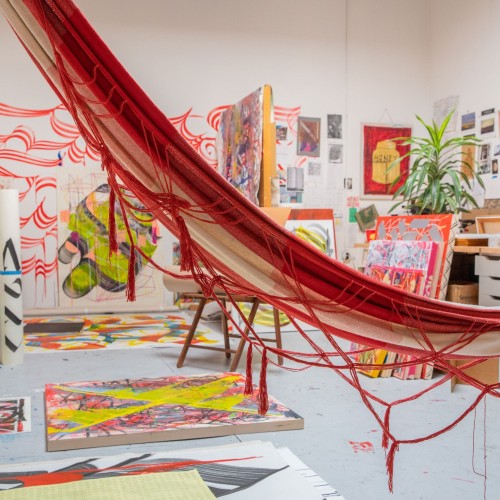Rebranding Mingei Part Two: A studio visit with Yomar Augusto, the typographer, graphic designer and artist behind the Museum's new typeface.
Just Our TypeClymer is an independent typeface designer and design tool developer, based in New York City. After graduating from San Diego State University, he received a Master of Design degree in type design from the Koninklijke Academie van Beeldende Kunsten (Royal Academy of Art) in The Hague, Netherlands, where he originally met Augusto. Until May of 2018, Andy had worked for almost 13 years at the Hoefler Type Foundry, where he contributed to notable typefaces Vitesse, Forza, Ideal Sans, Archer and Surveyor, and spearheaded the design of Operator and Obsidian. www.andyclymer.com.
Did you grow up in Southern California?
I grew up in Irvine, then I attended San Diego State University in 1998 to study Graphic Design. I owe so much to my career path as a type designer to three very important teachers there: Susan Merritt, Michelle Hays and Guusje Bendeler. They collectively saw that I loved working with type and got it set in my mind to keep pursuing this small corner of design after graduation. Guusje Bendeler had been a student at the Royal Academy of Art in The Hague, Netherlands, which has an excellent and well known masters course in typeface design called Type&Media. I took their encouragement and applied about a year after graduating and was very luckily accepted!
How did you meet Yomar Augusto, and how did you first engage on the Mingei type collaboration?
Yomar was a classmate of mine in the Type&Media course in The Hague. It was an amazing and life-changing year to be studying abroad in a class of 12 students from 10 countries. I think we learned as much from each other's experiences as we did from the class curriculum. After graduating, I landed a dream job at the Hoefler Type Foundry in New York, where I worked for nearly 13 years until leaving to open my own independent design studio just last year. After so many years of working for a type foundry, it's been a goal to find as many ways as possible to collaborate with friends, and I'm very happy to have been able to finally work alongside Yomar.




